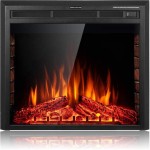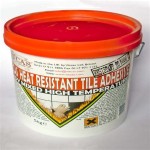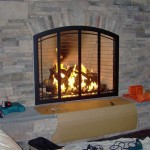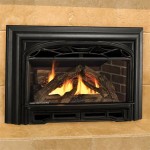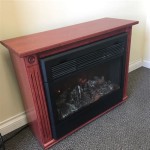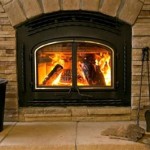Outdoor Fireplace Landscaping: Creating a Warm and Inviting Space
An outdoor fireplace offers more than just warmth; it serves as a focal point for outdoor living, extending the usability of patios and yards into cooler seasons. Thoughtful landscaping around an outdoor fireplace amplifies its appeal, creating a cohesive and inviting environment for relaxation and entertainment. Careful planning, considering factors like safety, style, and plant selection, is crucial for successful outdoor fireplace landscaping.
The design process should begin with an assessment of the existing space. This includes analyzing the available square footage, the architectural style of the home, prevailing wind patterns, and existing landscaping features. Understanding these elements will inform the layout and material selection for both the fireplace and the surrounding landscape.
Safety is paramount when designing an outdoor fireplace area. Local regulations and building codes should be consulted and adhered to. Maintaining a safe distance between the fireplace and flammable materials, such as wooden structures or dry vegetation, is essential. A non-combustible surface, like stone or gravel, should extend outwards from the fireplace to prevent sparks from igniting nearby materials. Furthermore, consider wind direction when positioning the fireplace to minimize smoke impacting seating areas or neighboring properties.
Key Considerations for Fireplace Placement and Design
The location of the outdoor fireplace directly impacts its functionality and the overall aesthetics of the space. Consider foot traffic patterns and desired privacy levels. Positioning the fireplace in a sheltered area can enhance its usability by providing protection from wind and rain. If the goal is to create a social gathering space, locate the fireplace near existing patios or decks. Orienting the fireplace to take advantage of scenic views can further enhance its appeal.
The design of the fireplace should complement the architectural style of the home and the surrounding landscape. Material choices play a significant role in achieving this harmony. Natural stone, such as flagstone or river rock, blends seamlessly with organic landscapes, while brick or concrete offers a more formal and structured appearance. The size and shape of the fireplace should also be proportionate to the scale of the outdoor space. A fireplace that is too large can overwhelm a smaller area, while one that is too small may be dwarfed by a larger landscape.
Plant Selection and Integration
The plants surrounding an outdoor fireplace contribute significantly to the overall ambiance. Careful plant selection is crucial, considering factors like mature size, growth habit, and seasonal color. Choose plants that thrive in the specific climate and soil conditions of the region. Drought-tolerant species are often a good choice for areas near a fireplace, as they are less susceptible to heat damage. Avoid planting highly flammable plants, such as conifers or those with resinous leaves, close to the fireplace.
Layering plants of varying heights and textures creates visual interest and depth. Low-growing groundcovers can soften the edges of the fireplace and surrounding hardscaping. Ornamental grasses add movement and texture, while shrubs provide structure and privacy. Trees can offer shade and define the boundaries of the outdoor living space. When selecting trees, consider their mature size and root system to avoid potential damage to the fireplace or surrounding structures.
Strategic placement of plants can also enhance the functionality of the outdoor fireplace area. Planting fragrant herbs like lavender or rosemary near seating areas can create a sensory experience. Thorny shrubs can deter unwanted guests, while tall grasses can provide a natural screen for privacy. Consider using container plants to add pops of color and flexibility to the landscape design.
Enhancing the Space with Hardscaping and Lighting
Hardscaping elements, such as patios, pathways, and retaining walls, define the structure and flow of the outdoor fireplace area. The materials used for these elements should complement both the fireplace and the existing landscape. Natural stone pavers create a rustic and informal feel, while concrete pavers offer a more contemporary aesthetic. Pathways should be wide enough to accommodate foot traffic and easy to navigate, especially in low-light conditions. Retaining walls can level sloping areas and create raised planting beds.
Lighting plays a critical role in creating a welcoming and functional outdoor space. Strategically placed lights can illuminate pathways, highlight landscape features, and create a warm and inviting ambiance. Low-voltage landscape lighting is energy-efficient and safe for outdoor use. Consider using a combination of uplighting, downlighting, and path lighting to achieve a balanced and layered effect. String lights can add a festive touch, while lanterns and torches provide a more romantic and intimate atmosphere.
Furniture selection is also important. Choose weather-resistant furniture that is comfortable and durable. Consider the size of the seating area and the number of people it needs to accommodate. Outdoor rugs can define seating areas and add warmth and texture to the space. Adding decorative elements, such as outdoor art or water features, can personalize the outdoor fireplace area and reflect the homeowner's individual style.
Proper drainage is essential for maintaining the health and longevity of the landscape around an outdoor fireplace. Ensure that the area is graded to allow for water to drain away from the fireplace and surrounding structures. Consider installing a drainage system to prevent water from pooling in low-lying areas. Mulching planting beds helps to retain moisture, suppress weeds, and regulate soil temperature.
Regular maintenance is key to keeping the outdoor fireplace and surrounding landscape in good condition. Clean the fireplace regularly to remove ash and debris. Inspect the chimney for cracks or damage and make repairs as needed. Trim plants as needed to maintain their shape and size. Remove weeds and fallen leaves. Fertilize plants regularly to promote healthy growth. By following these guidelines, homeowners can create a beautiful and functional outdoor fireplace landscape that provides years of enjoyment.

Outdoor Fireplace Landscaping Design In Appleton Wi

4 Outdoor Fireplace Ideas For Your Arizona Landscape

The Dos And Don Ts Of Outdoor Fireplace Construction Boro Landscaping

Designing Outdoor Fireplaces Wallace Landscape Associates

Should I Install An Outdoor Fireplace Or Firepit Jt Landscaping

Outdoor Fireplaces And Firepits Artistic Landscapes

Outdoor Fireplaces Ricci S Landscape Management

Outdoor Fireplace Fire Pit Design Tips Keane Landscaping

Designing Outdoor Fireplaces And Fire Pits

Outdoor Fireplace Design Ideas Getting Cozy With 10 Designs Unilock
Related Posts

